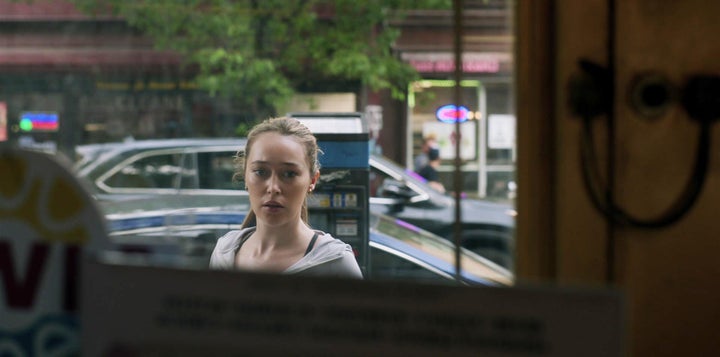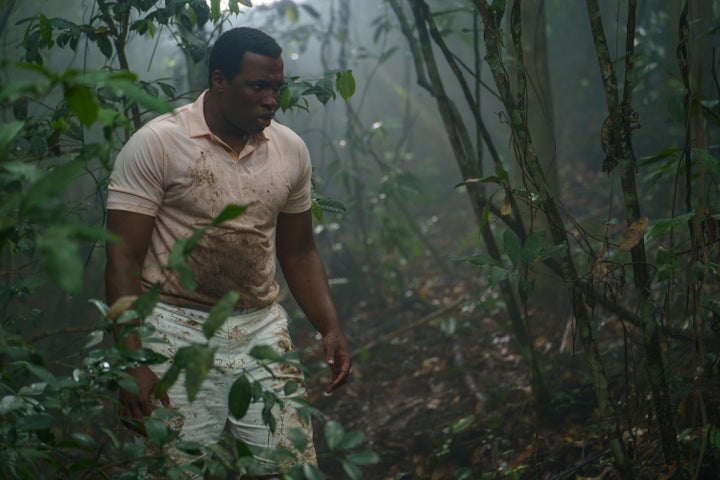
It’s a well-known fact that murdered white girls and women get a lot more attention and respect than, well, literally any marginalized person who is brutalized. That truth is meant to be an undercurrent throughout “Saint X,” the new Hulu series that untangles what led to a — you guessed it — white college student’s death while on vacation with her family in the Caribbean.
But that barely makes any impact when the show fails to explore anything around that topic in a compelling way — chiefly, the roles of race, class and privilege. What it does do successfully, however, is make a rarely interesting, multiple-timelined whodunit that presents the young woman’s beauty and sex appeal as so beguiling that there are several suspects in the case.
It’s an awkward, simplistic interpretation baked inside a premise that is otherwise promising. In fact, Alexis Schaitkin’s novel of the same title upon which the series is based (published just months before 2020’s supposed cultural reckoning) was hailed for its “acute” racial and social commentary.
So, what happened when it came to adapting it for television? The answer to that is just about as frustrating as the plot. Several episodes are directed by the great Dee Rees, and the series boasts a bevy of mostly female writers — including at least one of color — who’ve handled complicated storytelling in the past including on “The Sinner” and “The Handmaid’s Tale.”
But “Saint X” isn’t nearly as smart or resonant as either of those shows, even at their worst. Much of that is on account of the way the two central protagonists are drawn. The story opens 18 years ago when Alison (West Duchovny — daughter of Téa Leoni and David Duchovny) is on a gorgeous island getaway with, begrudgingly, her parents and little sister.
Begrudgingly because Alison feels that her white, cultureless mom and dad, Mia and Bill (Betsy Brandt and Michael Park), and awkward younger sibling are seriously cramping her style. Because, as “Saint X” incessantly points out, Alison is the progressive, Toni Morrison-reading academic — and her family is not.

But neither is Alison, really. While she never fails to chide her parents for being the typical white folks who come to a beautiful island to luxuriate and show little interest in its Black and brown cultures, Alison seeks out the local late night parties and the locals themselves for a threesome.
When Mia questions some of her daughter’s obvious contradictions, Alison’s only response is that she at least wants to learn and is “trying.”
It’s an exasperating, though realistic, portrayal of conflicting white liberalism that is so pervasive — and just as clumsily handled as it is on “The White Lotus.” Exchanges like this go unchecked, just withering away into the warm breeze and across the beach, partly because many of the central characters are just as white and clueless.
But also, the Black characters (more on them in a bit) seem either to shrug it off or be indifferent about it, even when they are out of sight from their wealthy, white visitors and able to speak freely. A smarter series would have shown the reality of those intimate interactions. “Saint X” doesn’t seem interested.
Then, amid Alison’s exhaustive efforts to prove to everyone around her that she’s a good person and do more of learning, she dies under mysterious circumstances. And in true, terrible-headline fashion, “Saint X” positions her death as Beautiful and Beloved Young White Woman Dies After Joining Two Black Locals For a Fun Night Out.
That isn’t based on any astute exposition or commentary the series’ writers explore on the show, though. A lot of that comes from Duchovny’s flighty performance, presumably in part based on the direction, and the narrative itself. And the two young Black men who are accused of her death become another type of casualty in the court of (racist) public opinion.

Alison is consistently presented as the breezy, blond, pretty young woman who parades her beauty around, much to the evident dismay of other horny singles and married men whom she passes over for two resort workers (Jayden Elijah and Josh Bonzie).
It doesn’t make Alison an especially sympathetic victim, which is fine because not every victim is and needs to be. You often get the feeling while watching “Saint X” that any particular thing means something, that the series is trying to point to something. But it doesn’t, and it isn’t. It relies far too heavily on whatever the audience brings to it, without being about anything at all.
Adding to that frustration is the present-day storyline, in which Alison’s sister Emily (Alycia Debnam-Carey), now all grown up and living with her white boyfriend in a Caribbean area of the Bedford–Stuyvesant neighborhood of Brooklyn, is determined to, supposedly, find out what happened to Alison.
But she tries to do this by covertly befriending fellow Bed-Stuy resident Clive aka Gogo (Bonzie), now long gone from his Caribbean home and who doesn’t recognize the adult Emily, for reasons “Saint X” never adequately explains. Is it to try to coerce an admission or get more intel on him?
A distraught Emily desiring closure in her sister’s case makes sense. Her feeling some guilt about her own negligence, even though she was a young child, makes some sense. But intentionally moving from her white neighborhood and her permanently bereaved parents to this one seems somehow conniving because the series doesn’t know what to do with that.
Right around this point, often abandoning a more fleshed-out adult Emily, is when “Saint X” tries to, ineptly, balance the story by expanding the narratives of the Black characters who get all but tossed away. The show takes us back to their perspective 18 years prior, offering some rich detail about their hopes and dreams away from the resort on which they worked.

But much of it doesn’t seem particularly useful, beyond humanizing the characters so that they’re not just the pawn in a story heightened only by the personification and centralization of white privilege. It’s as if to say: These Black people also have lives.
Are they interesting? Not particularly. What would make them interesting is how they fit into the themes of the show. But what continues to push against that mode of thinking is that the show seems to have washed away any themes the source material may have had, making these extraneous plotlines just that. Without a point, it just seems like characterizations and little else.
Gogo is the most prominent Black character. Bonzie infuses him with both an accessible warmth in the past and a brokenness when we meet him again years later in the series after so much damage. We learn the truth about his friendship with Edwin (Elijah), revealed over the course of several episodes.
There’s a compassion that seeps into the dialogue when it comes to Gogo, Edwin and their circles that isn’t extended to Alison, Emily and their family, who all come off as one-dimensional or outright inexplicable. What is so needed here, especially after the way Alison, et al., were set up, are intimate exchanges that offset or complement what we saw from the white characters.
How did they feel about these visitors? How did they feel about their serviceable roles in their lives? Edwin, especially, gets very close with Alison and harbors his own internal conflicts, but “Saint X” doesn’t bother with any of it. His story ends with a kerplunk, undercutting any potential the show set up, complete with a revelation that never feels right as a twist.
But then there is the murder mystery at the center of the whole series, which becomes the sole reason to watch each of the eight episodes. What happened to Alison? Did Gogo and Edwin have anything to do with it? Once you get to the end of this hollow story, you’ll be upset that you even asked these questions.
